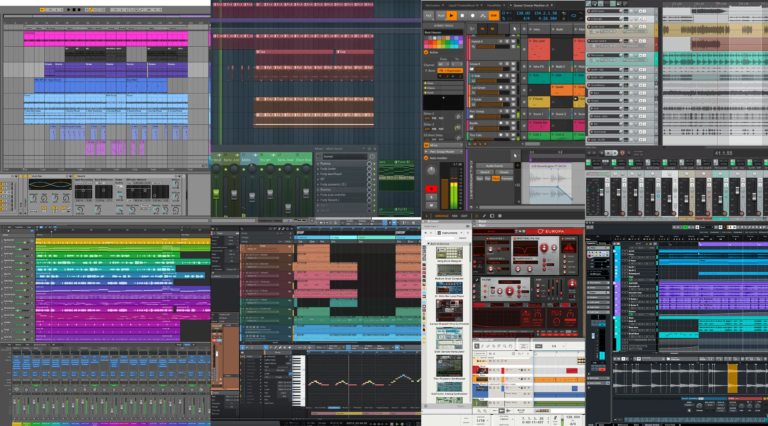Bengaluru’s very own Sooraj Cherukat, aka Hanumankind, recently released his latest single, “Big Dawgs,” produced by Kalmi....
Our Blog
Husn tera tauba tauba tauba tauba Husn tera tauba tauba tauba tauba Husn tera tauba tauba tauba...
Are you looking to elevate your music production game with FL Studio? This powerful digital audio workstation...
Another banger from taylor swift & post malone is here. Find the Taylor swift’s Fortnight lyrics below...
Artificial Intelligence (AI) has revolutionized various fields, and music is no exception. From generating melodies to composing...
In the ever-evolving landscape of music production, having the right software can make all the difference in...
Jai Shri Ram Lyrics by Adipurush is a brand new Hindi song sung by Ajay-Atul, various artists...
Rasiya Lyrics from Brahmastra is brand new Hindi song sung by Arijit Singh while this latest song is featuring Ranbir Kapoor,...
Song: Lag Ja Gale Music Composer: Madan Mohan Lyrics: Raja Mehndi Ali Khan Movie: Woh Kaun Thi(1964)...
Song: Dhokha Singer: Arijit Singh Lyrics: Manan Bhardwaj Music: Manan Bhardwaj Starring: Parth Samthaan, Khushali Kumar Label:...
Raataan Lambiyan Lyrics from Shershaah. It’s a new Latest Hindi song sung by Jubin Nautiyal, Asees Kaur and the...
Those who are fond of music and some way or the other to show themselves to the...
Singer Akhil Sachdeva Singer Meet Bros Song Writer Rashmi Virag This new track is sung by “Akhil...
Daily riyaaz is one of the most important parts of a singer’s life. As important as food....
Tu Bhi Sataya Jayega is the latest hindi song by Vishal Mishra with music given by Vishal...
Woh Chaand Kahan Se Laogi by Vishal Mishra is the latest song & the music also given...
Duniya Lyrics from “Luka Chuppi“. The song is sung by “Akhil” and “Dhvani Bhanushali“. Song’s music is given...
Mera Intezaar Karna Lyrics from Khuda Haafiz is the new Hindi song sung by Armaan Malik. This song is...
Well, this is the most frequently asked questions to any teacher by a beginner student.Whenever an absolute...
In the earlier post, I’ve shared some basic alankars for the absolute beginners of music. Alankars play...
Here I’m sharing the Sargam of the most lovable song by the audience, Tum Hi Ana. Play...
The soul-stirring song Chal Ghar Chalen from Malang is out now. Composed by Mithoon, the song is...
It was December 11, 1911, the ‘Jana Gana Mana’ was written by Nobel Laureate Rabindranath Tagore. The...
The king of romance Armaan Malik is here with new soulful song. It’s a heartwarming sad song...
The chilling whisper of fate returns in 2025 with Final Destination: Bloodlines, the sixth installment of the iconic...
On April 12, 2025, Indian rapper Hanumankind, born Sooraj Cherukat, took the Mojave stage at Coachella Valley...
Coachella 2025 is here, and it’s bigger than ever! Held at the Empire Polo Club in Indio,...
[Pre-Chorus: Drake]Who’s callin’ my phone? (Who’s callin’ that shit?)Who’s callin’ my phone? (Who’s callin’ that shit?)Who’s callin’ my phone? (Who’s...
If this world were mine Hey, Roman numeral seven, bae, drop it like it’s hotIf this world...
Introduction If you are a music producer, having access to high-quality sample packs and plugins is crucial...












